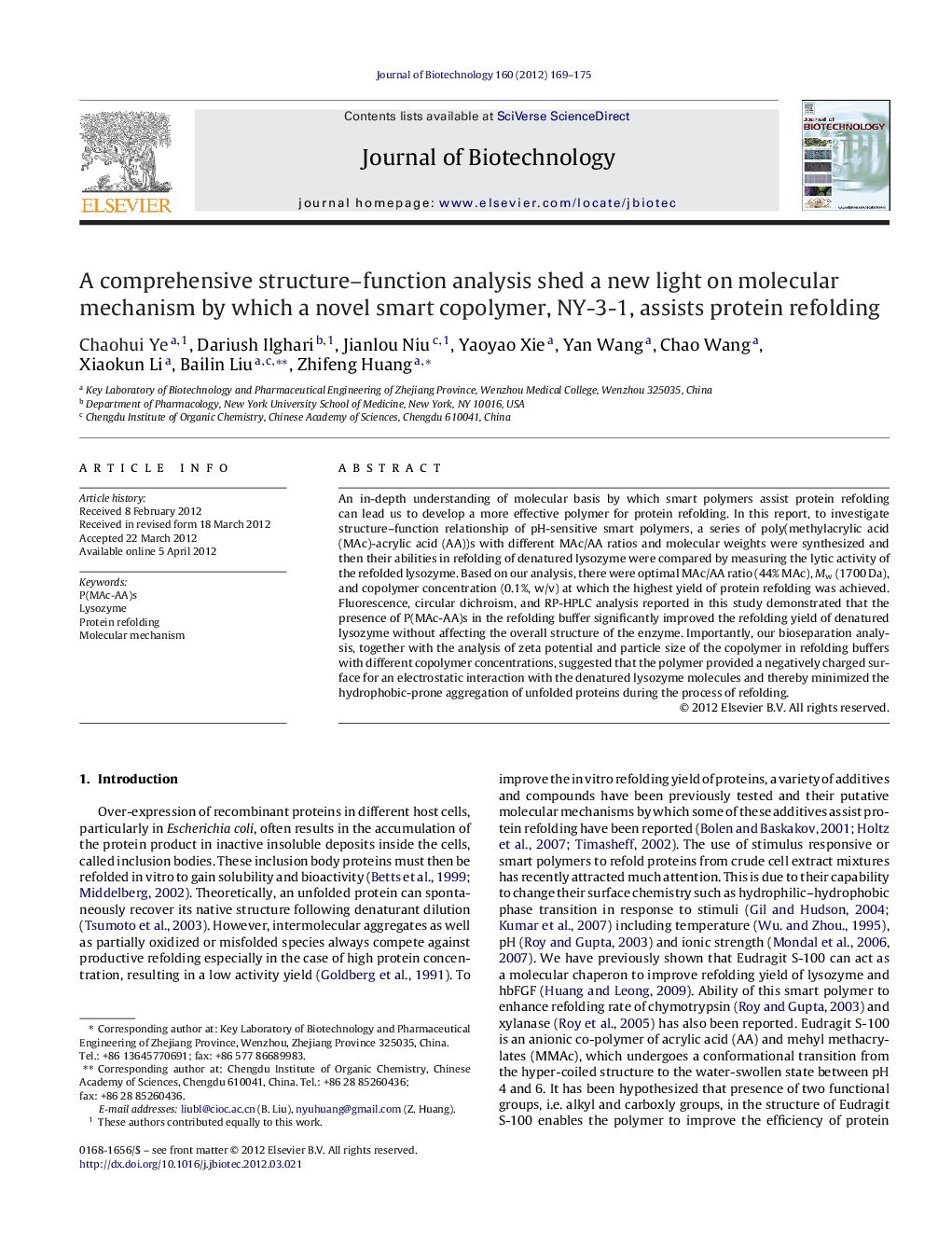| Article ID | Journal | Published Year | Pages | File Type |
|---|---|---|---|---|
| 23858 | Journal of Biotechnology | 2012 | 7 Pages |
An in-depth understanding of molecular basis by which smart polymers assist protein refolding can lead us to develop a more effective polymer for protein refolding. In this report, to investigate structure–function relationship of pH-sensitive smart polymers, a series of poly(methylacrylic acid (MAc)-acrylic acid (AA))s with different MAc/AA ratios and molecular weights were synthesized and then their abilities in refolding of denatured lysozyme were compared by measuring the lytic activity of the refolded lysozyme. Based on our analysis, there were optimal MAc/AA ratio (44% MAc), Mw (1700 Da), and copolymer concentration (0.1%, w/v) at which the highest yield of protein refolding was achieved. Fluorescence, circular dichroism, and RP-HPLC analysis reported in this study demonstrated that the presence of P(MAc-AA)s in the refolding buffer significantly improved the refolding yield of denatured lysozyme without affecting the overall structure of the enzyme. Importantly, our bioseparation analysis, together with the analysis of zeta potential and particle size of the copolymer in refolding buffers with different copolymer concentrations, suggested that the polymer provided a negatively charged surface for an electrostatic interaction with the denatured lysozyme molecules and thereby minimized the hydrophobic-prone aggregation of unfolded proteins during the process of refolding.
► Novel smart copolymers, P(MAc-AA)s, were synthesized. ► An optimized P(MAc-AA), NY-3-1, significantly improved the refolding yield of denatured lysozyme. ► The ability of NY-3-1 in protein refolding was affected by its composition and molecular weight. ► The copolymer, NY-3-1, electrostatically engaged lysozyme during the process of refolding.
